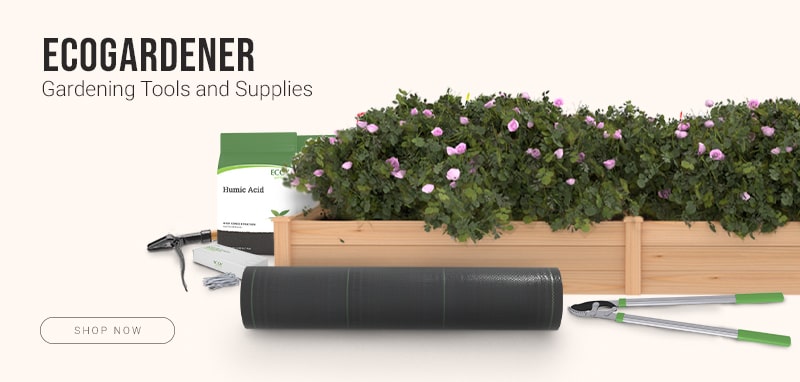If you’ve been growing plants for food or business, you’re probably familiar with humic acid. Humic acid comes from the final breakdown of organic matter. The chemical and biological humification of the decayed organic matter becomes concentrated and compressed into layers. Eventually, the substance turns into an organic, acidic electrolyte that can be used to amend the soil and improve its structure.
Contents []
Humic acid has various uses in gardening and agriculture. This organic acidic electrolyte is the final breakdown of plant and animal decay. It is formed through a process called chemical and biological humification of organic decomposition. It promotes better soil health, boosts plant health, and increases crop production.
Using Humic Acid

Aside from composting at home for organic fertilizers, using humic acid is another way to improve soil quality. So, how to apply humic acids to plants?
Here are some methods of applications.
Seed Coat
Humic acid is commonly used as a seed treatment to ensure faster germination and protect seedlings from microbial and fungal attacks. Humic acid has active compounds that activate plants on an embryonic level, promoting the rapid development of the plant by coating the seeds.
To use a seed coating, dilute the humic acid with distilled water and soak the seeds in the solution. The solution stimulates cell membranes and promotes better root development. Humic acid also enhances nutrient uptake to ensure survival during transplanting.
Foliar Spray
Spraying a humic acid solution is one of the fastest ways to apply humic acid to the garden. This method lets you cover a wider expanse of space in half the time too! To use humic acid for foliar spray, dilute about a kilo of humic acid with every 200 liters of water per hectare. For small sprayers, dilute about 5 grams of humic acid per 1 liter of water.
You can spray the solution on the underside of the plant leaves or directly on the soil. Either way works to boost plant health and ensure a bountiful yield.
Drip Irrigation
Farmers often mix humic acid with irrigation water and disperse the solution through a drip irrigation system. The amount of humic acid you need to apply will depend on the expanse of space that needs to be covered. Generally, you’ll use one to ten gallons per acre and not exceed a 3% solution of humic acid in 10% water. For adequate coverage, apply 1 quart to 3 gallons of humic acid solution per acre.
By applying humic acid through drip irrigation, the structure of the soil improves, allowing it to support plant life, promote better water retention, and boost crop yield.
Granular Form
Humic acid is available in two forms, liquid, and powder (granular form). In liquid form, humic acid is often applied in a solution. On the other hand, the powder can be used directly on the soil. You can also dilute the humic acid powder in water and spray it on the soil. The amount of humic acid powder you’ll use will depend on the size of the space you’re covering. But generally, mix about half a kilo of powdered humic acid per acre.
Soil Conditioner
Humic acid is best used as a soil conditioner. You see, not all soils are suitable for gardening or farming. The texture might not be ideal for supporting crops, or the nutrients in the soil are depleted. Humic acid promotes better plant and soil health by improving the plants’ nutrient uptake while enhancing the soil structure, so it holds water better. These provide several benefits to plants and their growing environments, such as:
- Increased yields
- Enhanced vigor
- Increased plant growth
- Resistance to infestations
- Minimizes plant stress
While humic acid does not provide nutrients to plants, it supports plant growth. This means you’ll still need to use organic fertilizers to bring nutrients back into the soil after every growing season.
Why should you use humic acid in the garden?

Humic acids promote the efficient absorption of nutrients from the soil. When the plants can absorb the nutrients from the soil, they grow healthier and more resistant to pests and diseases. Aside from improving nutrient uptake, humic acid has various biological and physical benefits. Humic acid stimulates root formation and seed germination.
Applying humic acid to the soil supports the garden’s microbial ecosystem. Beneficial microorganisms thrive, and in turn, the garden grows healthy. Humic acid increases plant enzymes crucial in various plant growth processes such as cell division, hormone regulation, and energy production.
Humic acid improves soil structure and function, ensuring better aeration and drainage and decreasing heaviness in clay soils. This compound also enhances the structure of loose or sandy soil by boosting its ability to hold moisture.
Changes in Soil pH When Using Humic Acid
Amending the soil with humic acid helps neutralize soil pH in acidic soil. This boosts the buffer capacity of the soil so the acidity won’t impact crops negatively. Adding humic acid to the soil changes its nutrient profile, affecting its pH. It doesn’t lower soil pH; instead, it triggers changes in the soil that neutralizes its pH. After treating with humic acid, the nitrogen, phosphorus, and potassium content are increased, making the soil pH more ideal for plant growth.
Physical Changes in Soil After Using Humic Acid
Humic acid can cause physical changes in the soil, which will benefit plant health. It can alter the soil’s structure and function, enabling loose soils to retain more water and dense, clay-like soil to form tiny air holes to boost drainage and aeration.
Clay soils hold excessive moisture and are pretty heavy, almost compacted. That’s because the clay molecules are too close together. Adding humic acid increases air pockets between soil molecules, promoting better drainage and air circulation.
Sandy soils’ molecules are far apart, which explains their loose texture. This makes the soil unable to hold moisture for long. The loose texture also means that the soil cannot hold nutrients for plants to absorb. Also, plant roots cannot hold onto loose soil as effectively because of the loose texture. Adding humic acid increases sandy soils’ ability to retain water and nutrients. Because of the improved texture and moisture retention, you don’t have to water your plants regularly.

Investing in the proper gardening tools is instrumental to the health of your garden. For more gardening tips, visit ECOgardener blog regularly.



